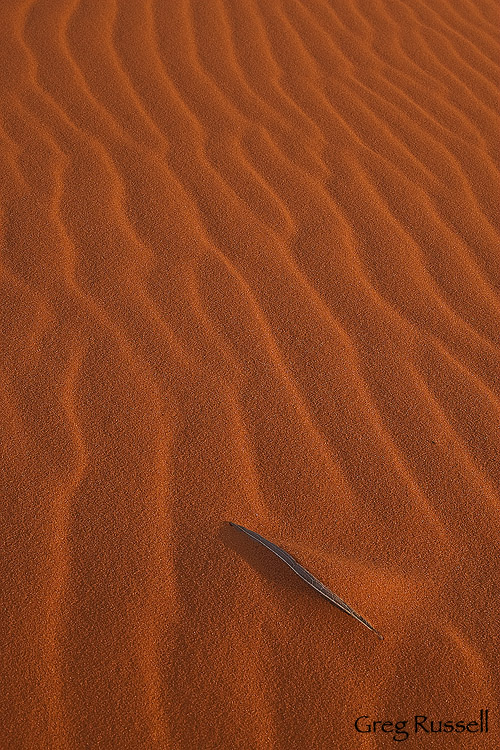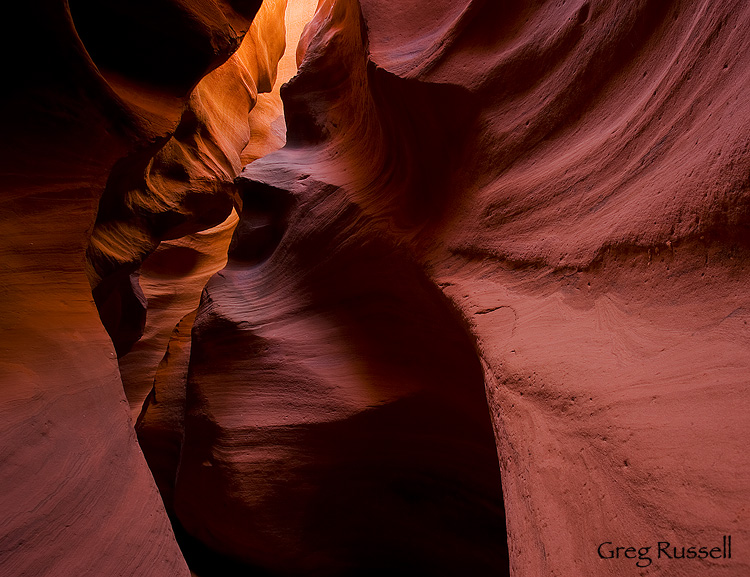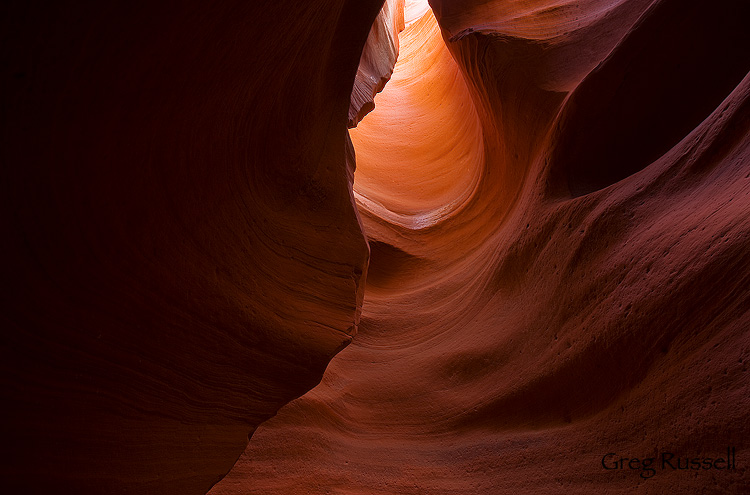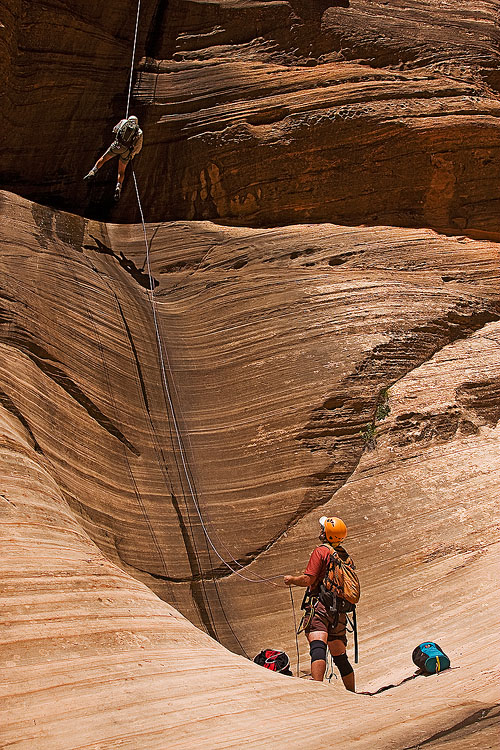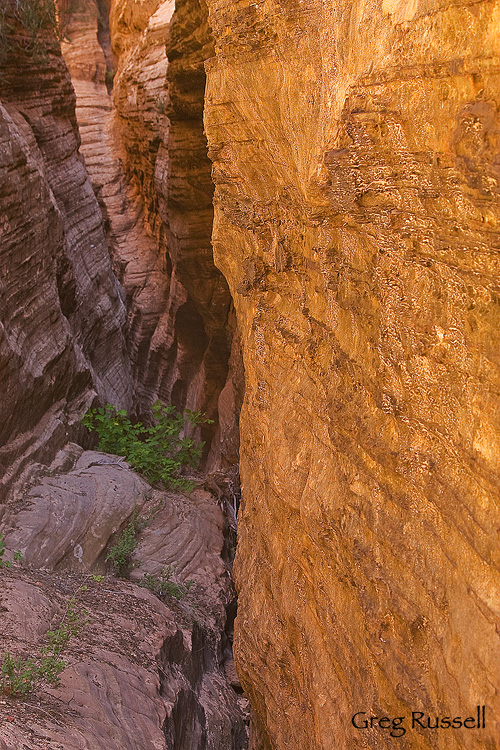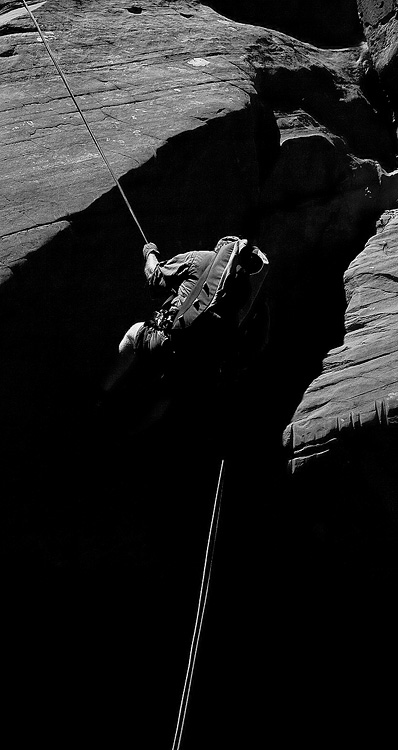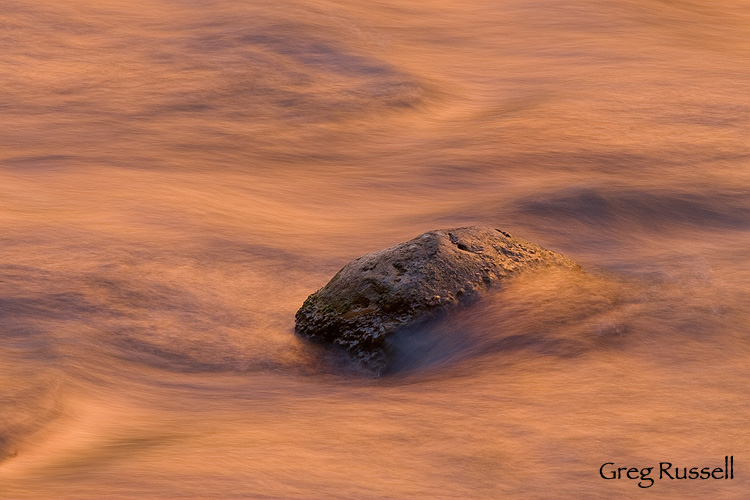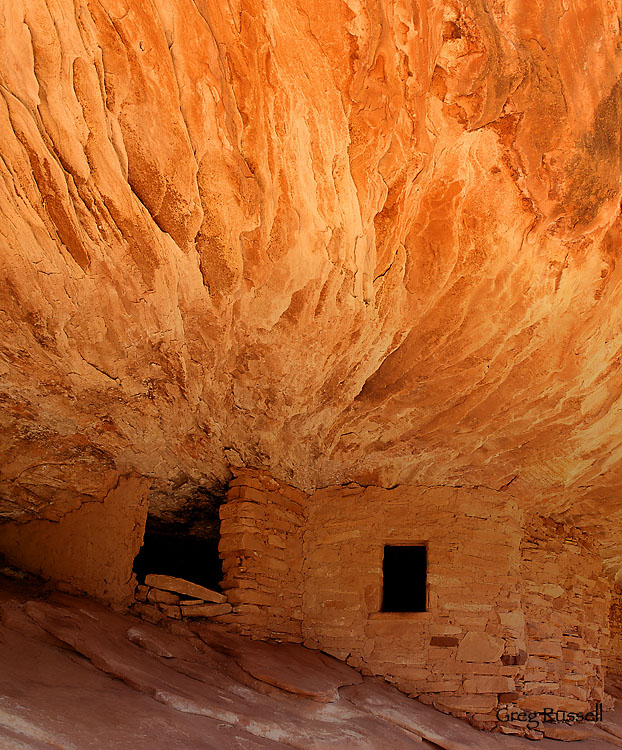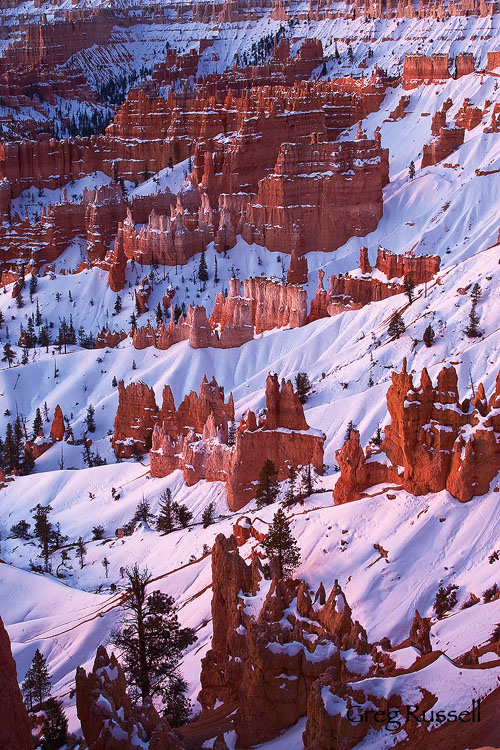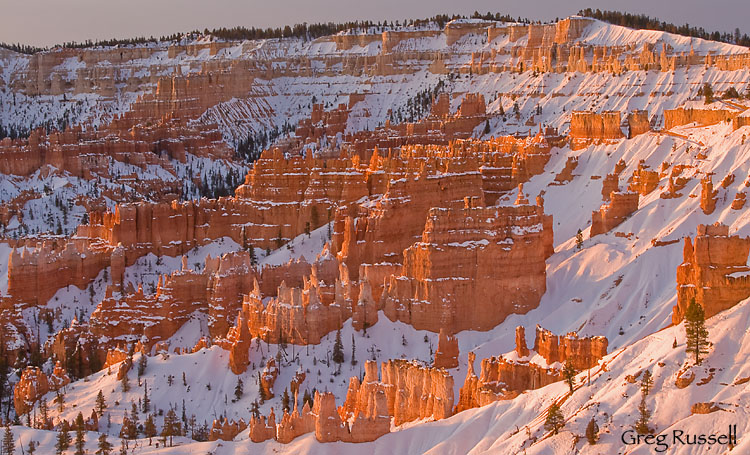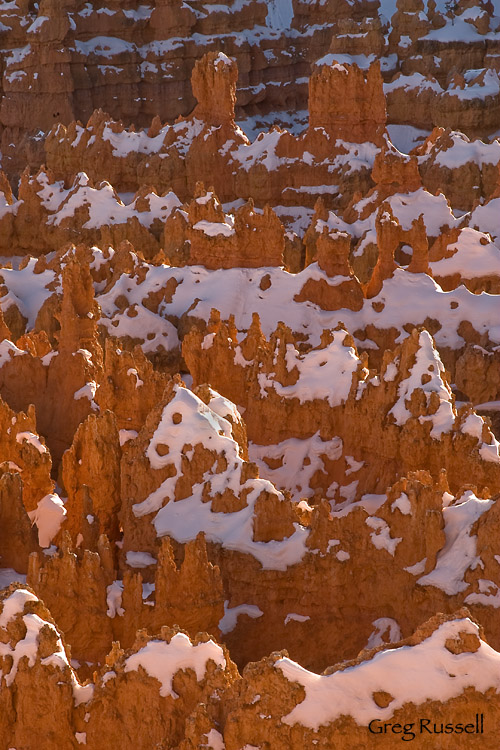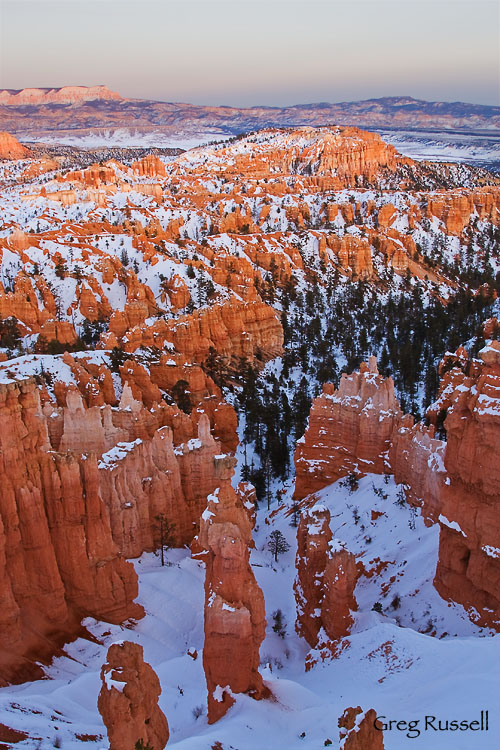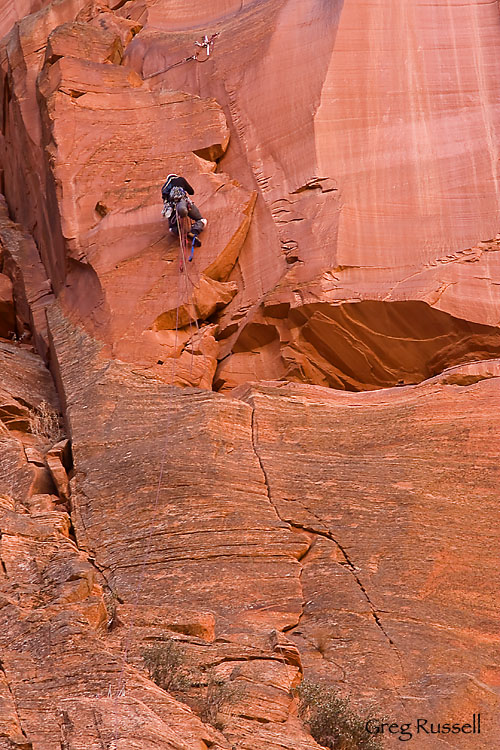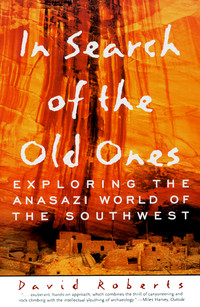Let the canyons seep into your soul. Allow the quiet, the mystery, the chaos to work its way deep into your being, making you calmer, gentler, sweeter.
–Tom Jones, Imlay Canyon Gear
I’ve just returned from a week-long trip to the greater Zion area in southwestern Utah, exploring a number of canyons. Two of the canyons within the park itself involved some technical expertise, some large rappels, and for my part, a few butterflies in my stomach. I was, however, able to carry my SLR body and a lens in a Pelican case and take some photos of this area of Zion National Park that few visitors get to see.
The first canyon we descended was Mystery Canyon, which feeds into Zion’s main canyon. The beginning of the hike is the descent into the canyon itself. I use the term ‘hike’ loosely–this is basically a controlled fall, with the hiker braking himself on tree branches, roots, etc, while trying to not kill himself. This descent has affectionately been named the “Death Gully.”
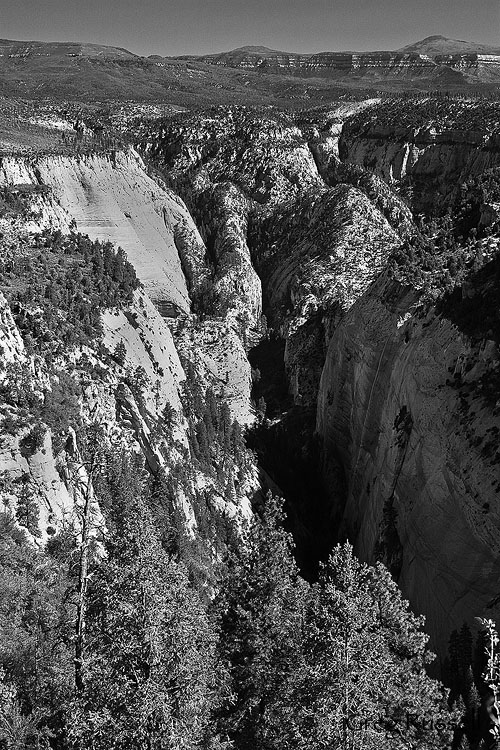
Mystery Canyon, Zion National Park, June 2010
Once in the canyon, the walls closed down around us, leading us through several rappels, ranging from 30-120 feet in length.
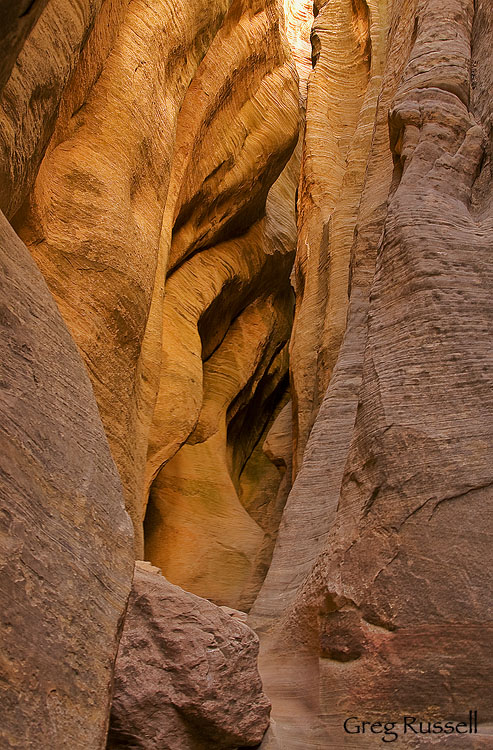
Inside Mystery Canyon, June 2010
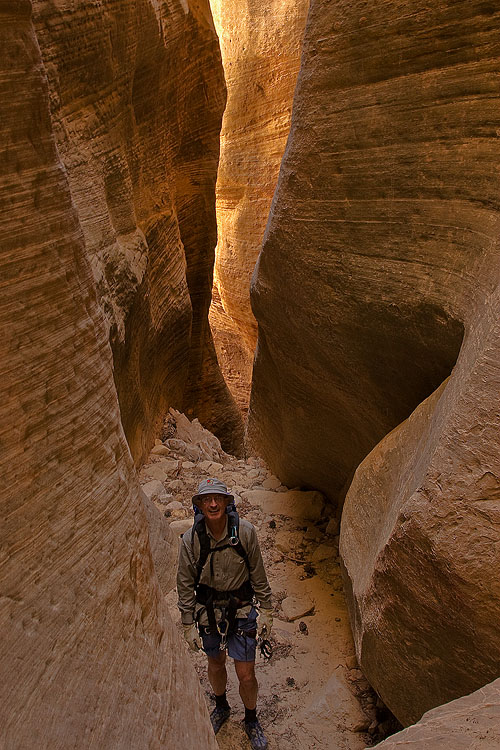
A canyoneer inside Mystery Canyon, Zion National Park, Utah
Mystery Canyon culminates with two large rappels; the first of which sends you into the icy waters of Mystery Springs, and the second one delivers you straight into the Narrows of the Virgin River, approximately 3/4 mile from the Temple of Sinawava. Because of its close proximity to the trailhead, you usually have an audience for the final rappel–make sure you don’t do a face plant on the rock!
Because of the high flow through the Virgin River this year, the day we descended Mystery was also the first day the Narrows were open, meaning we were the first group through that canyon this year. Because of that, we had a significant amount of deadfall to clear, making the going slow. We left the canyon scratched, battered, and bleeding a little bit, but honestly, it is so exciting to see a beautiful canyon that fewer than 1% of the park’s visitors will ever see.
The next day, we descended Behunin Canyon, which can only be described as BIG. I’ll share photos from that trip in the next blog post…

